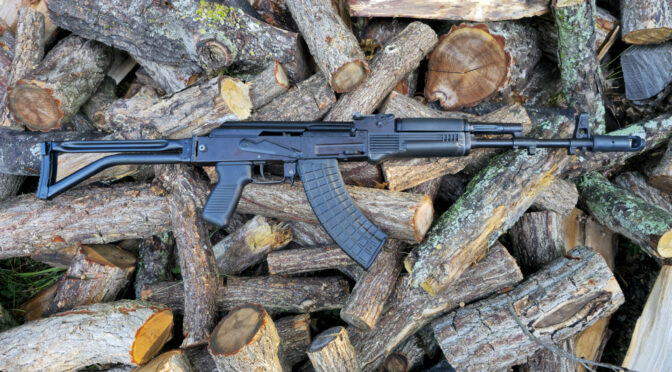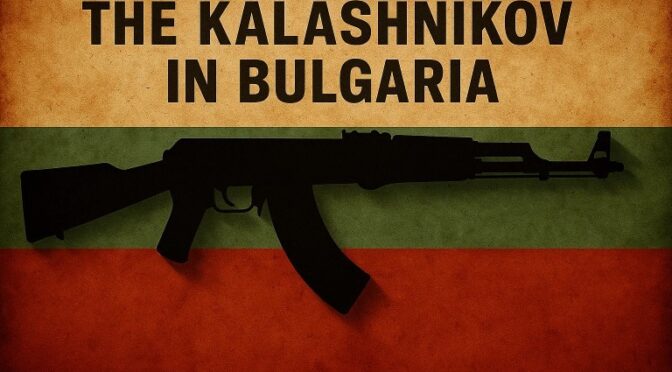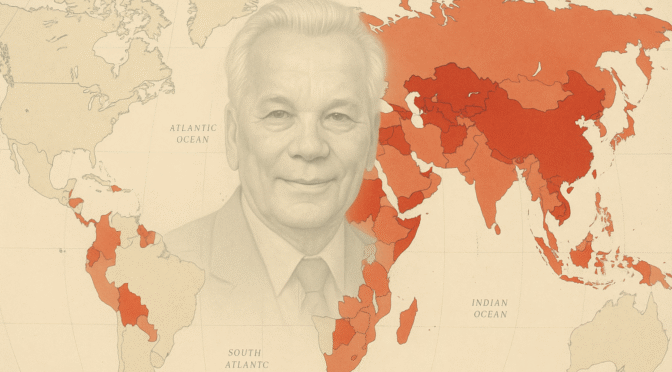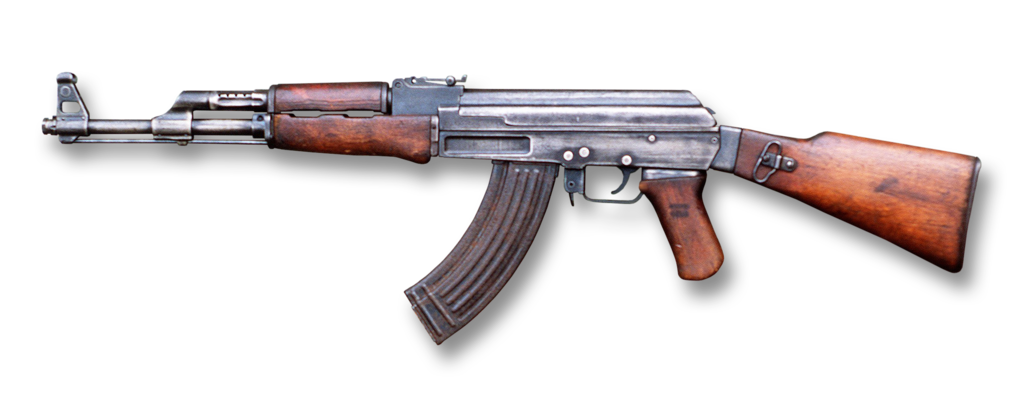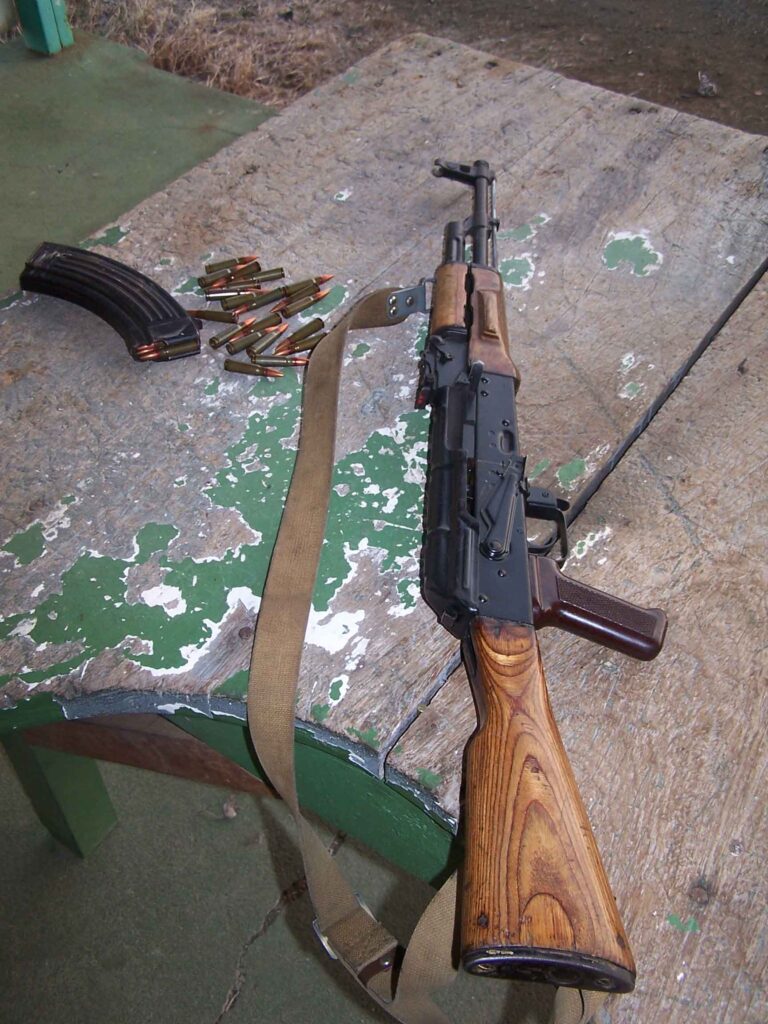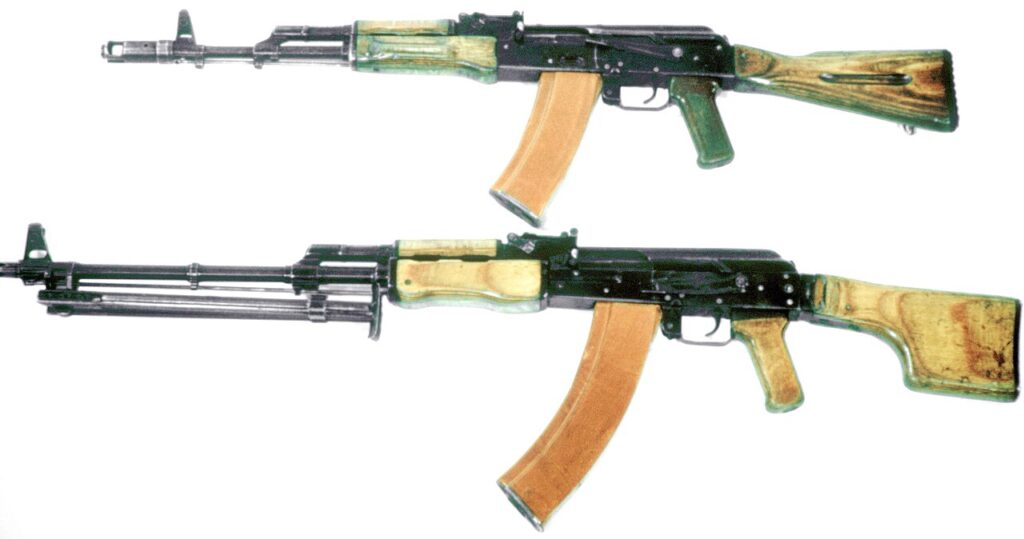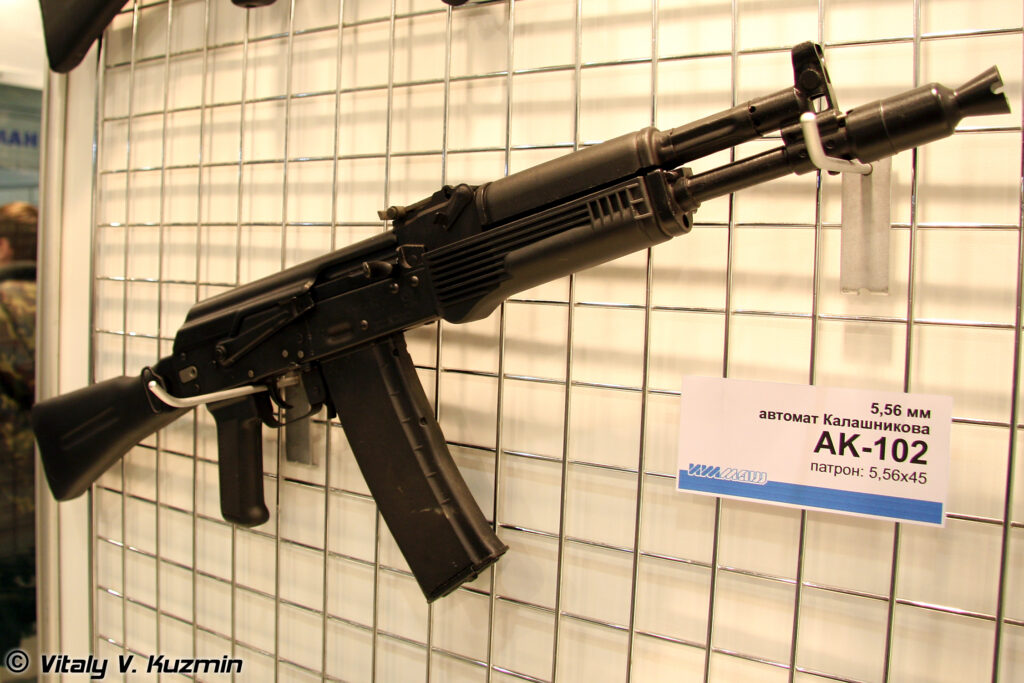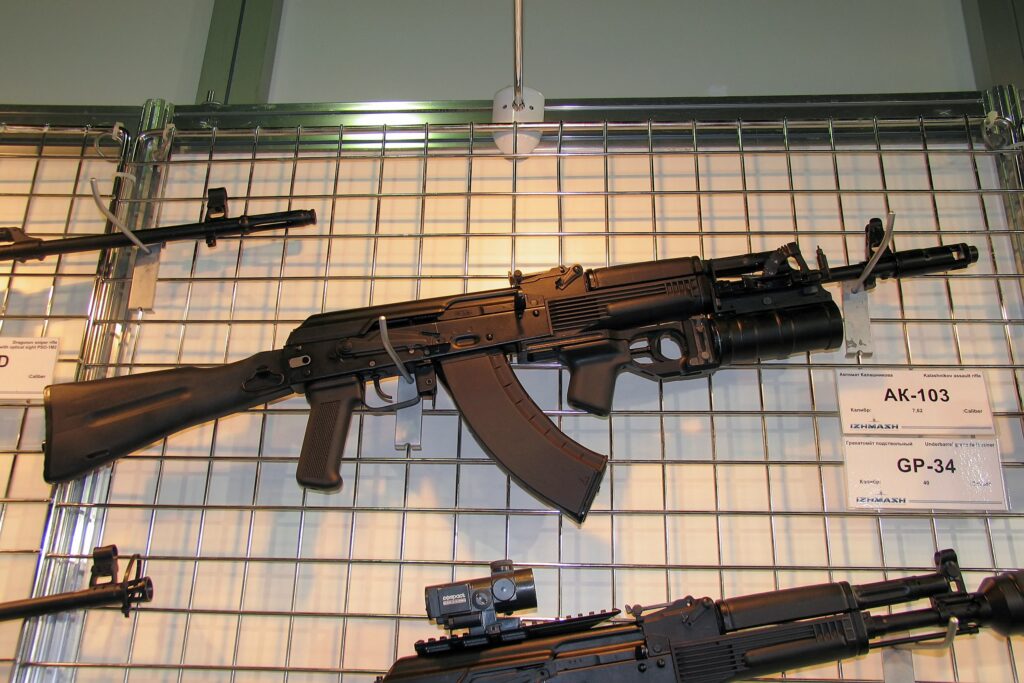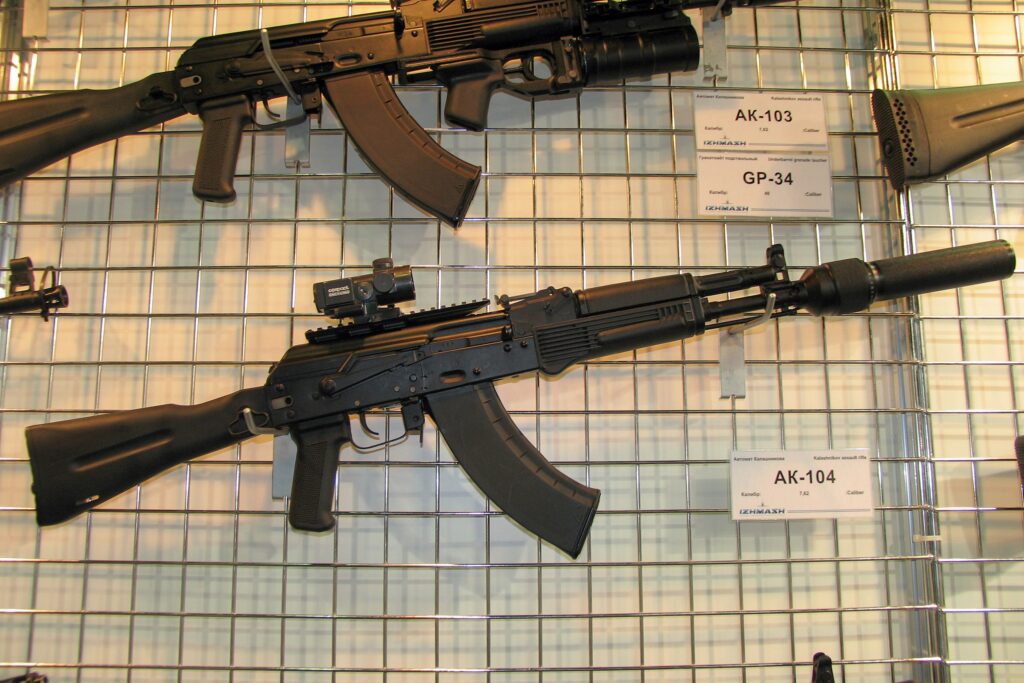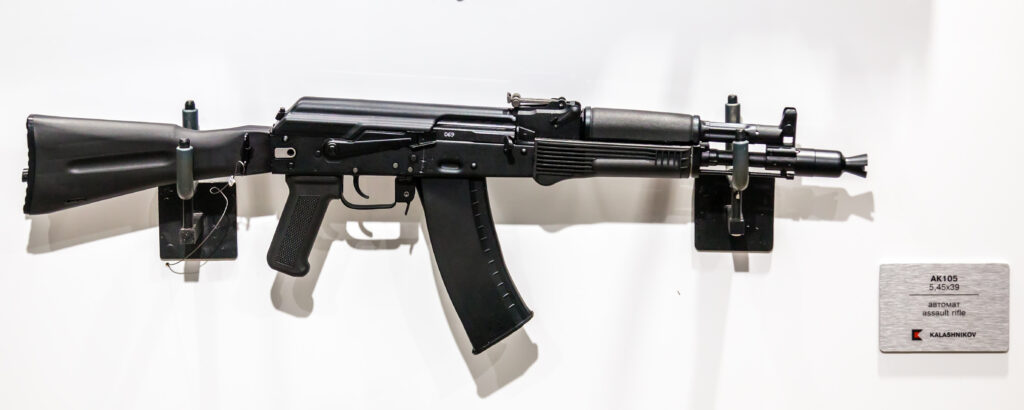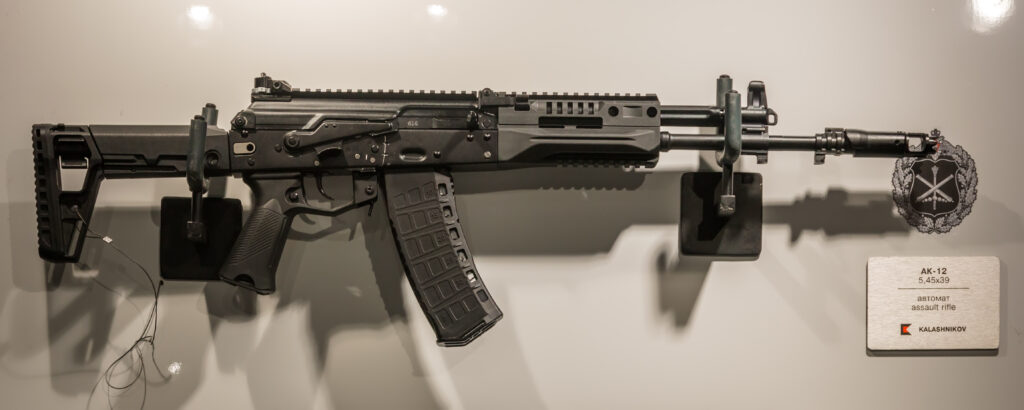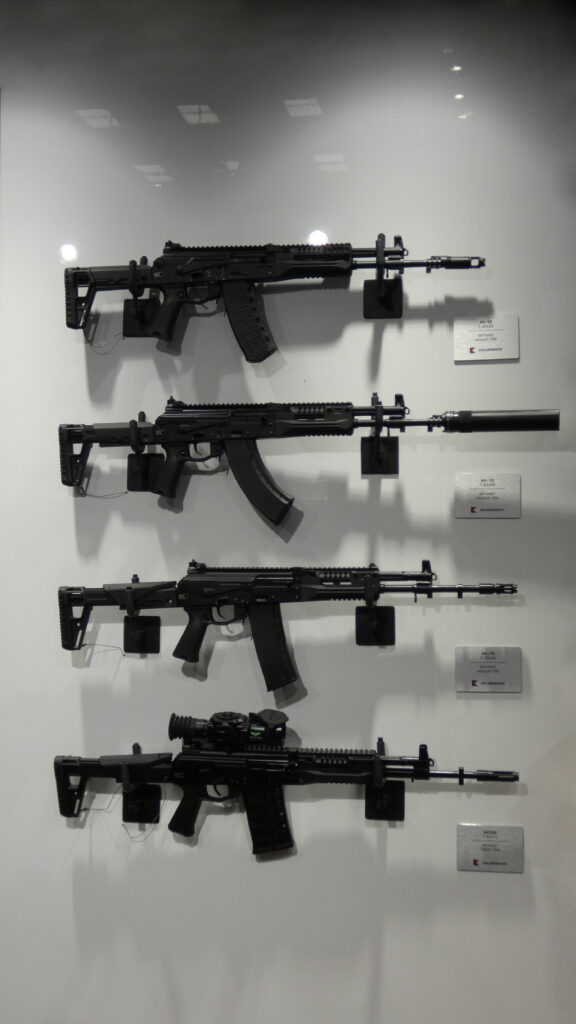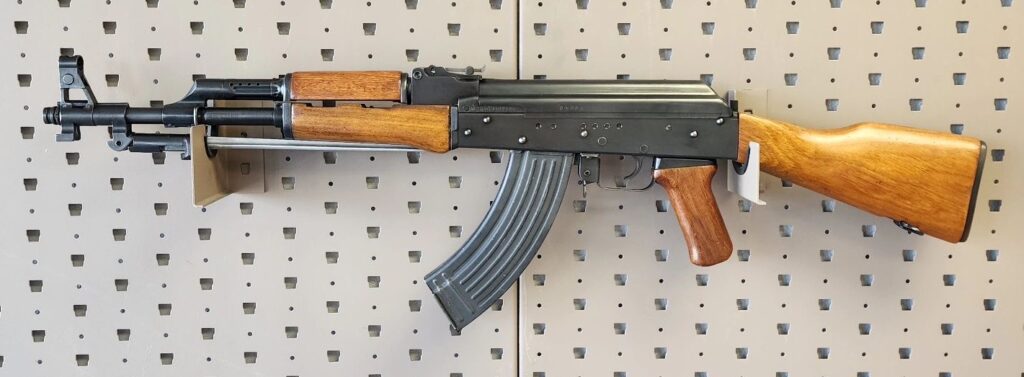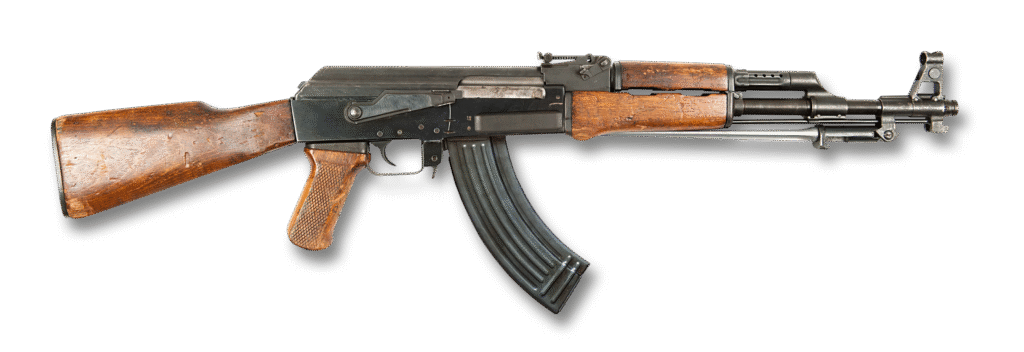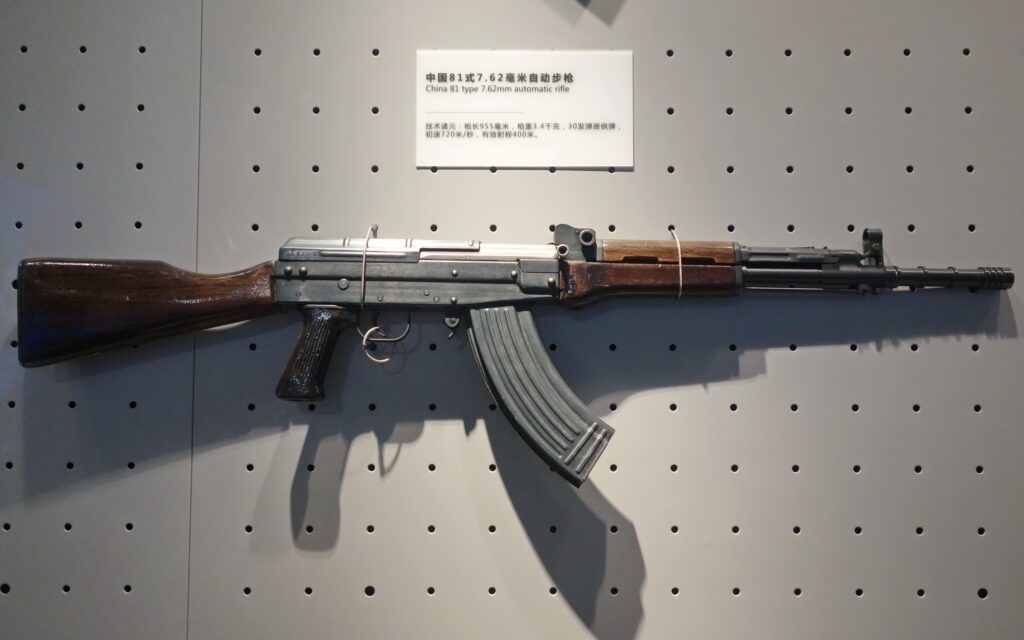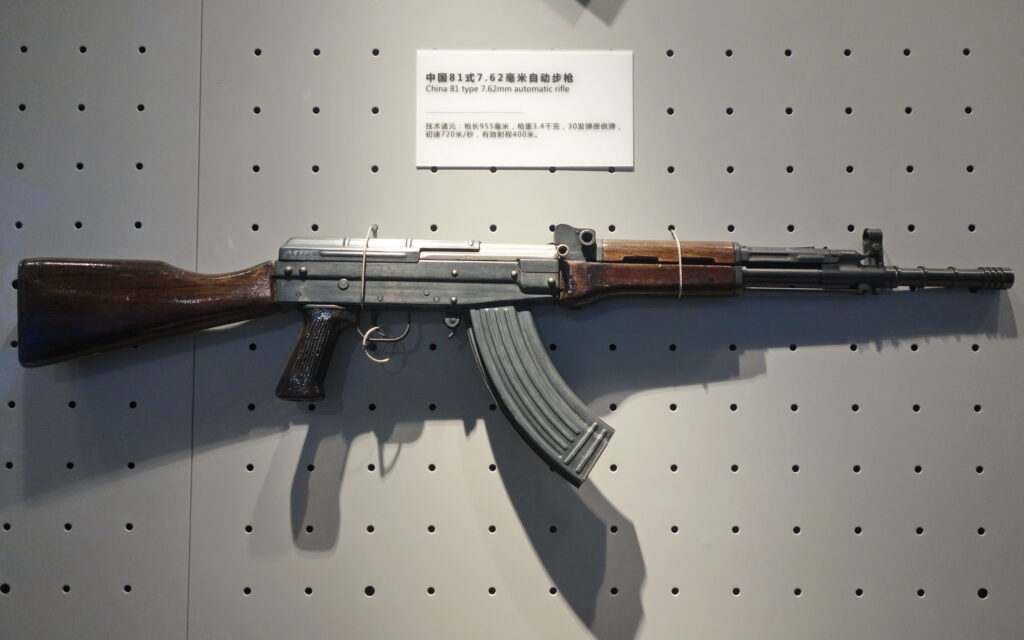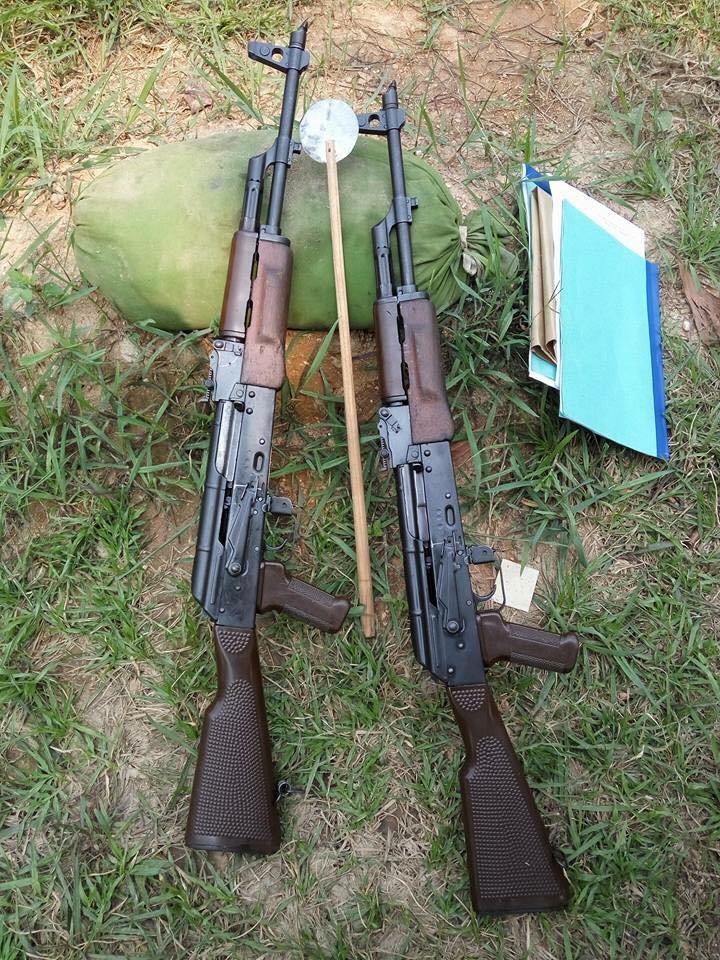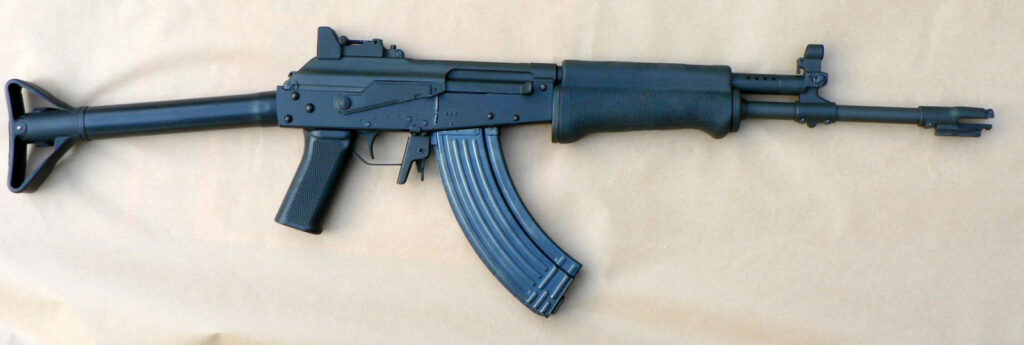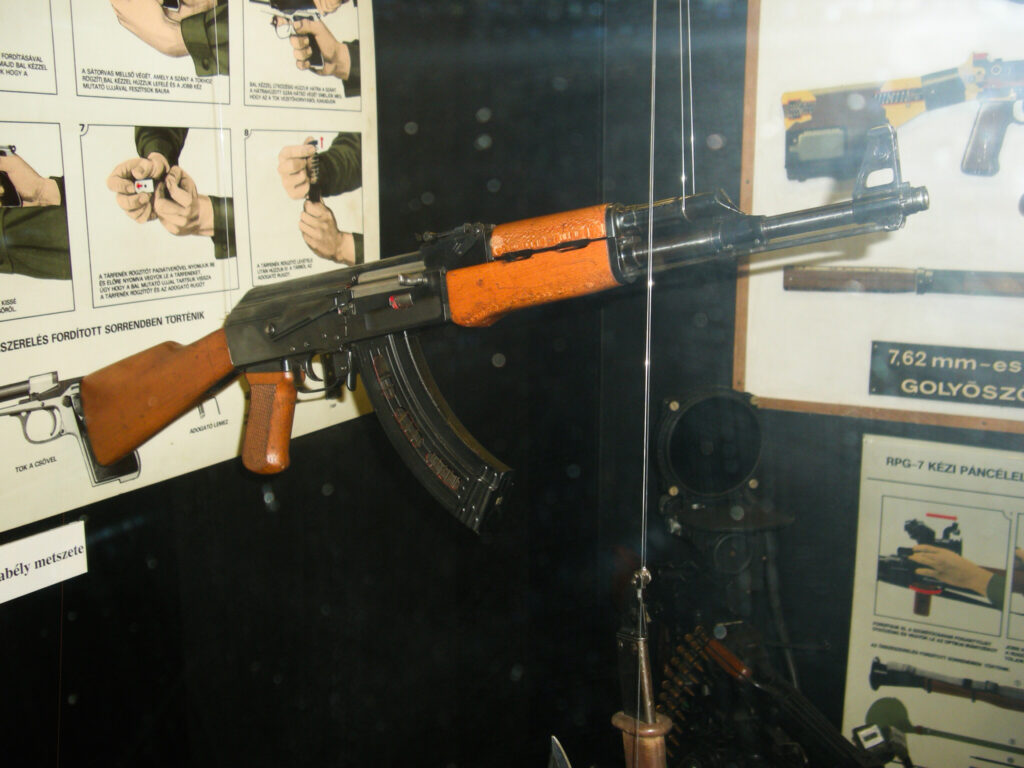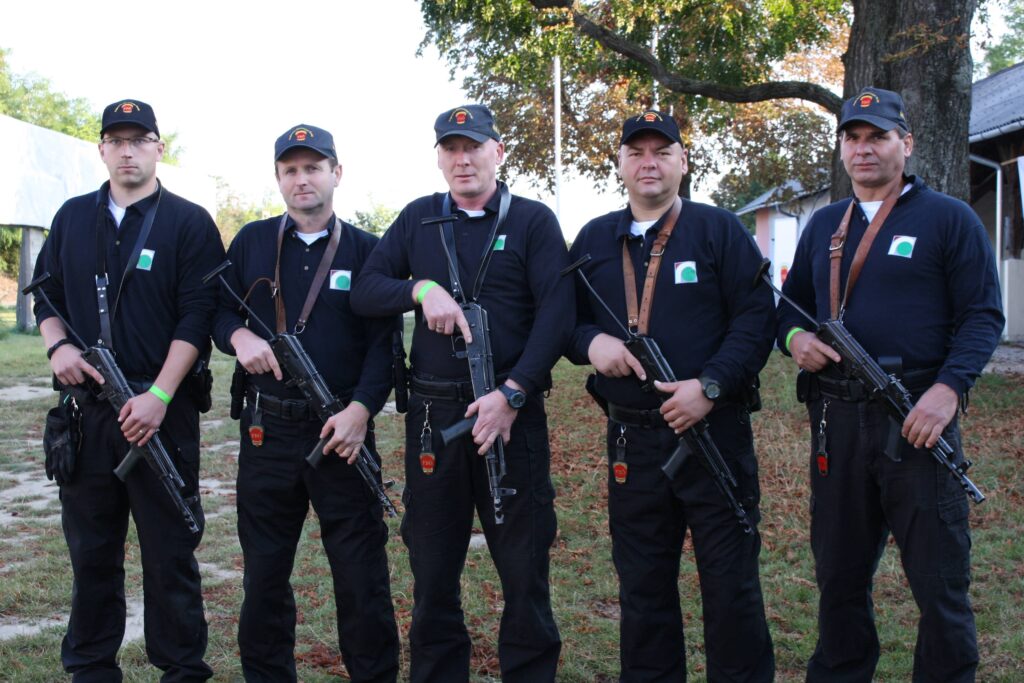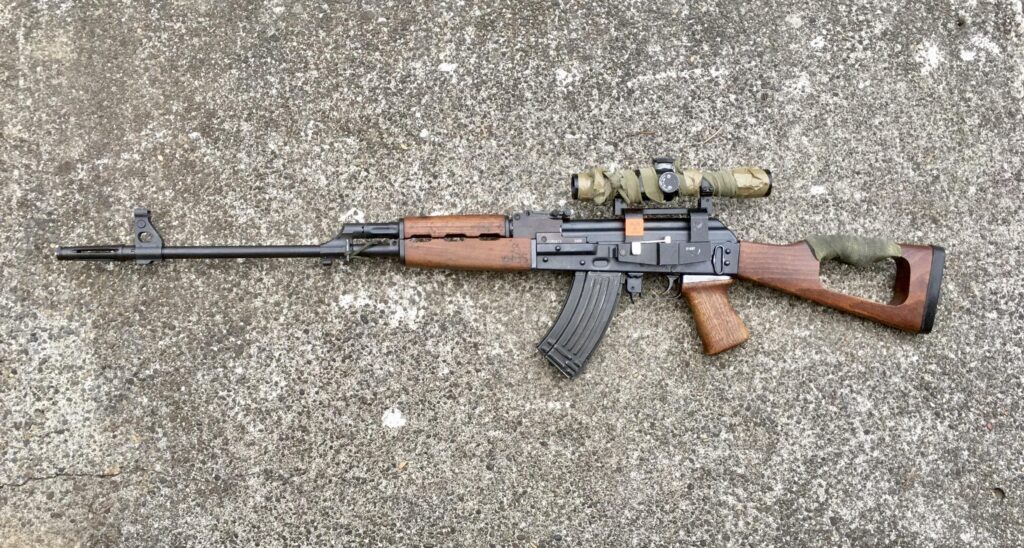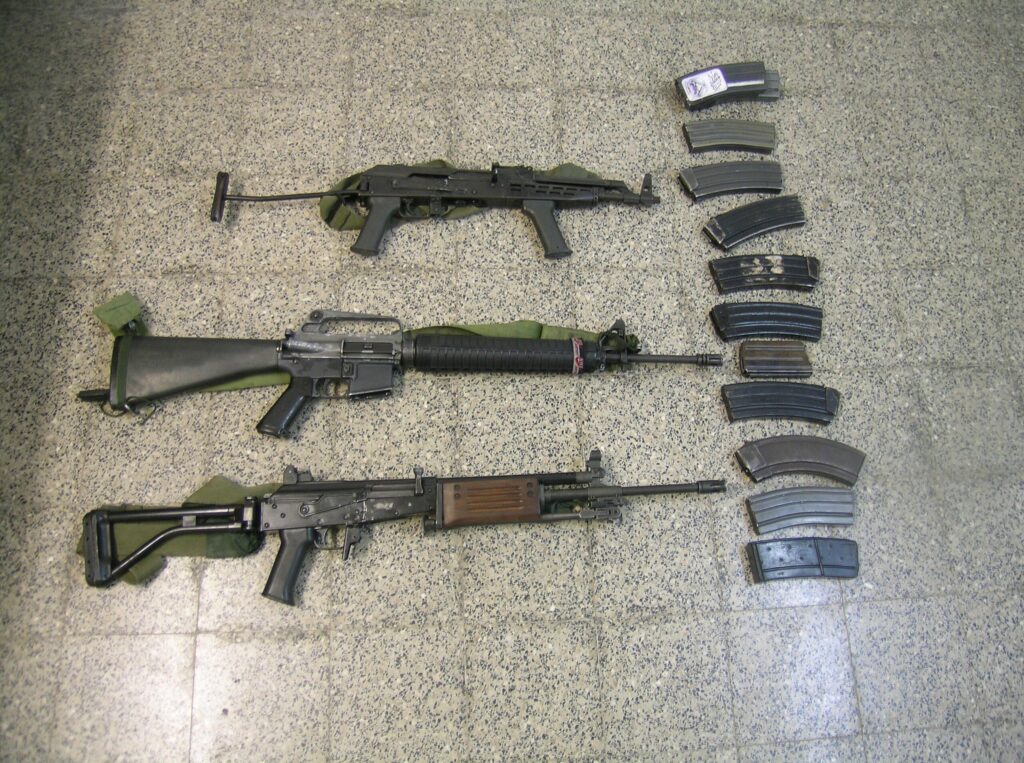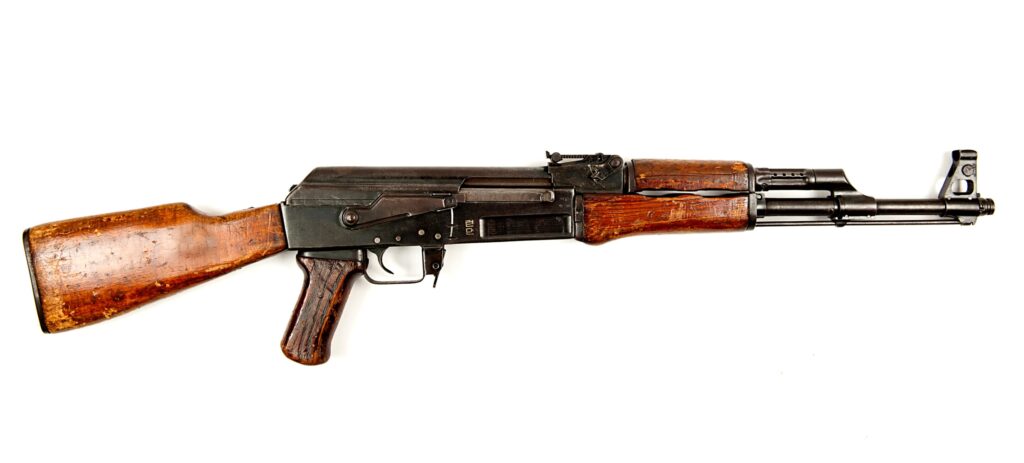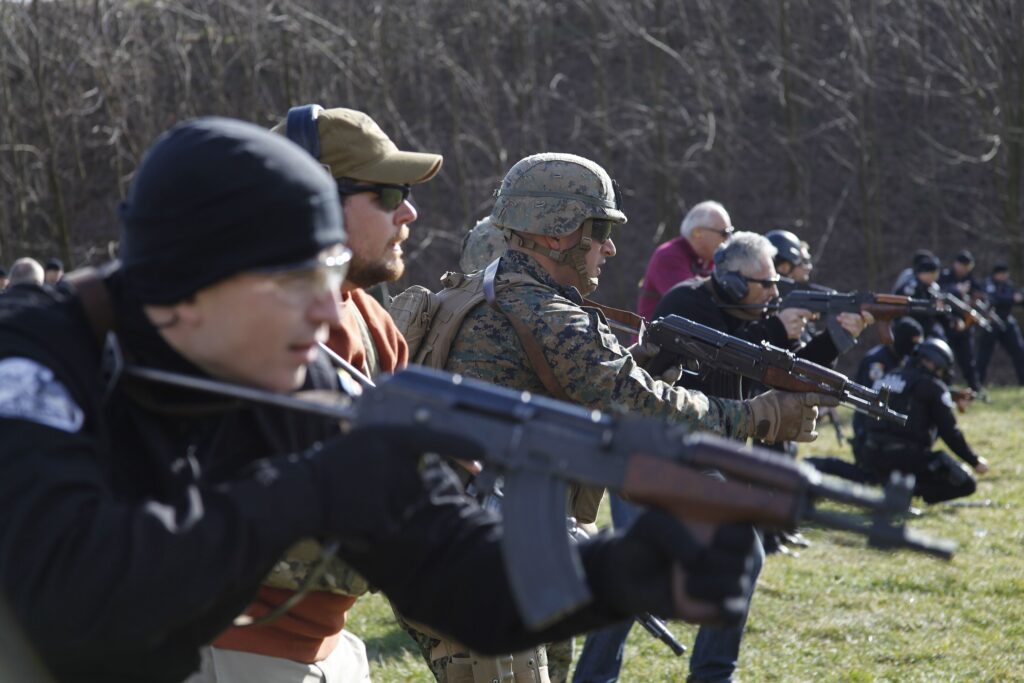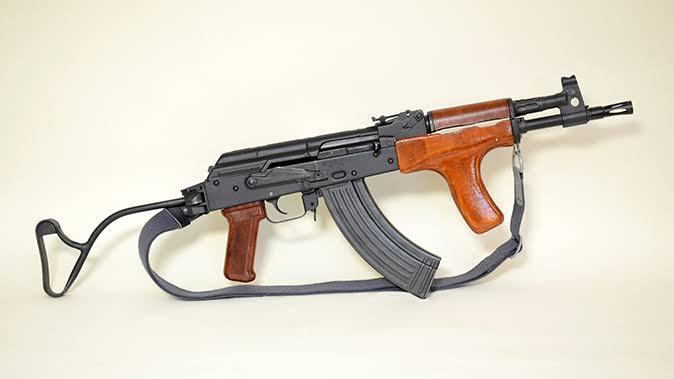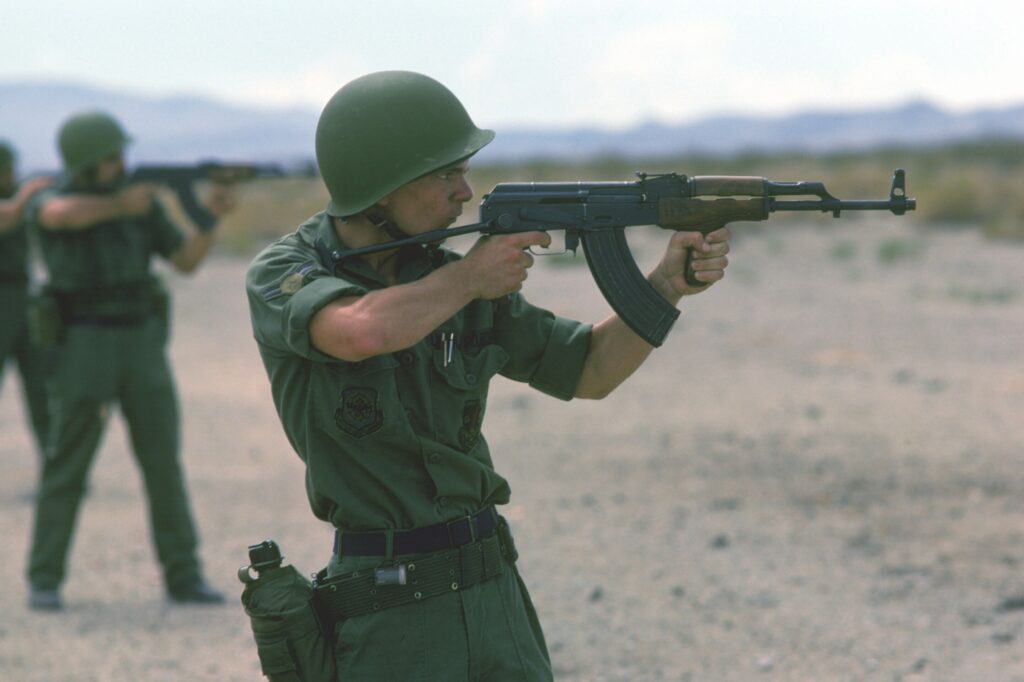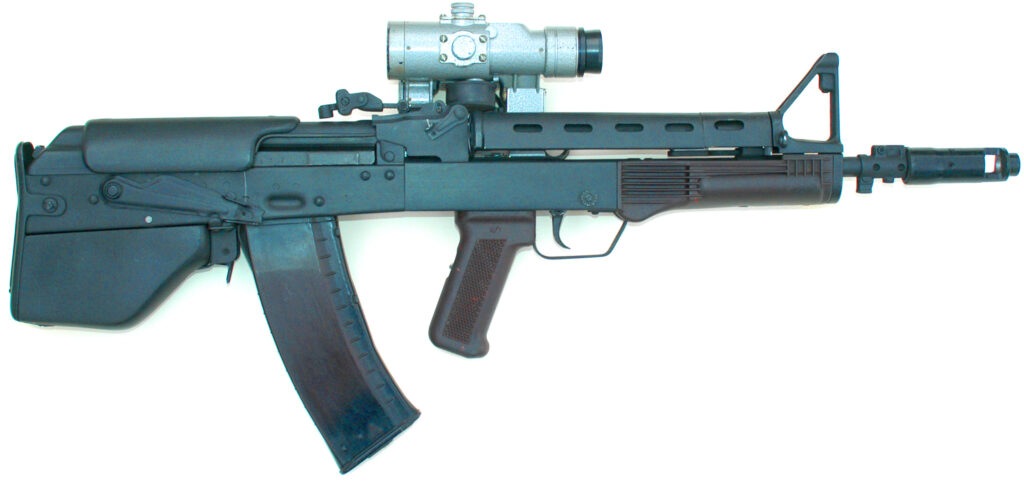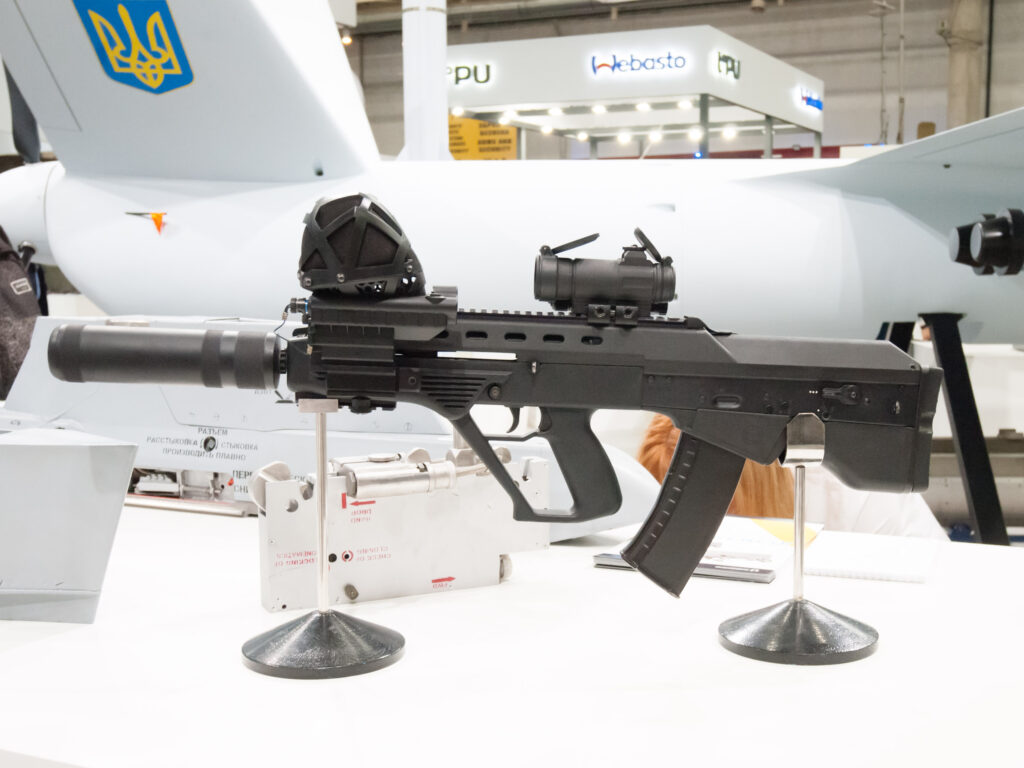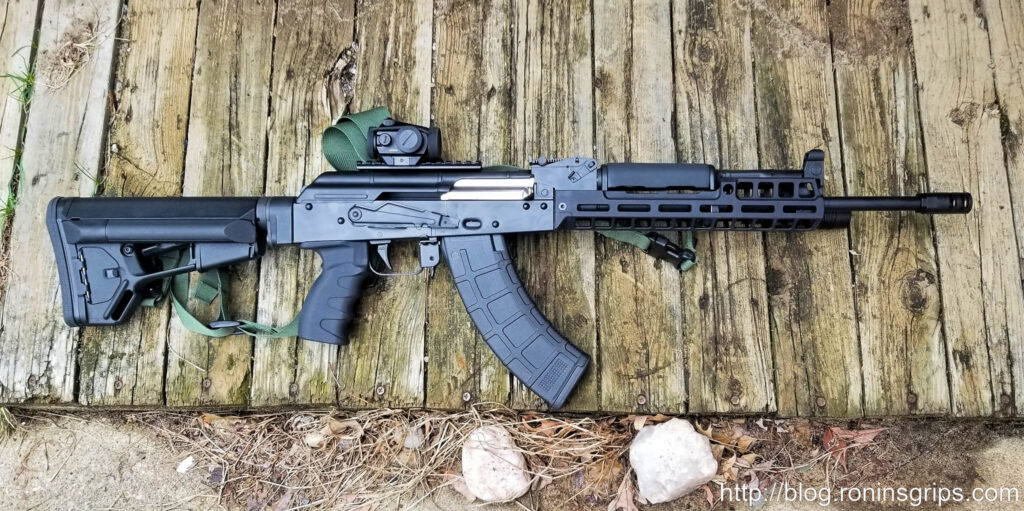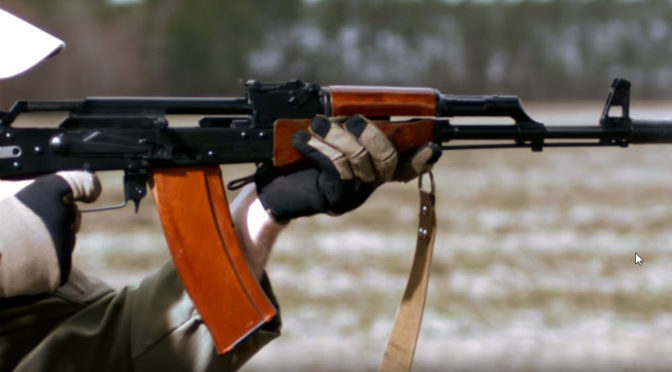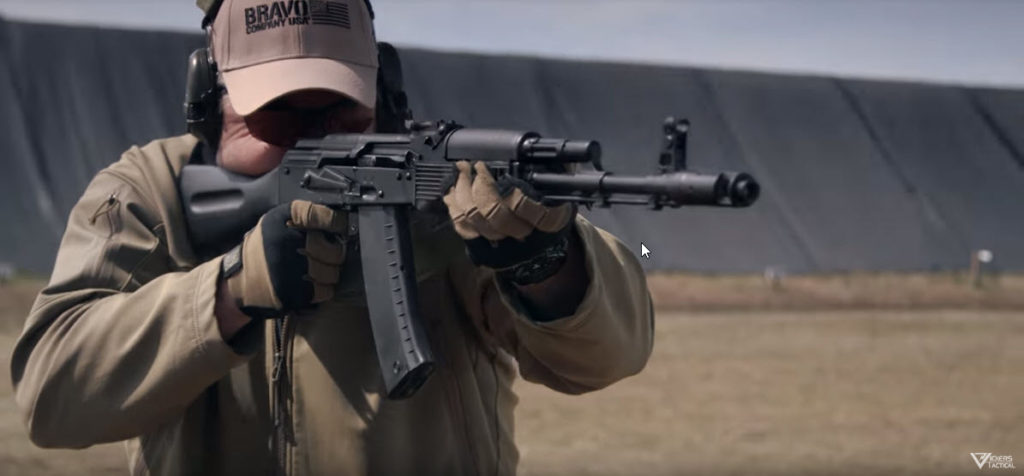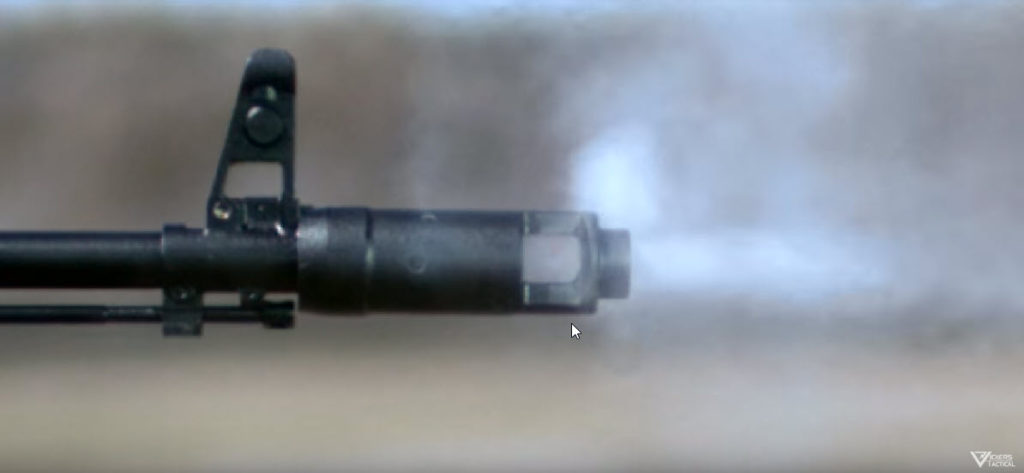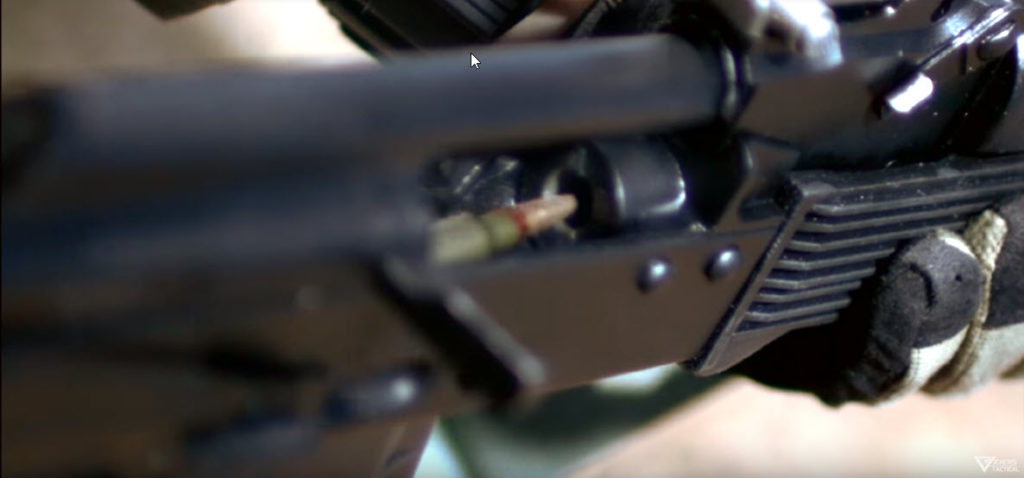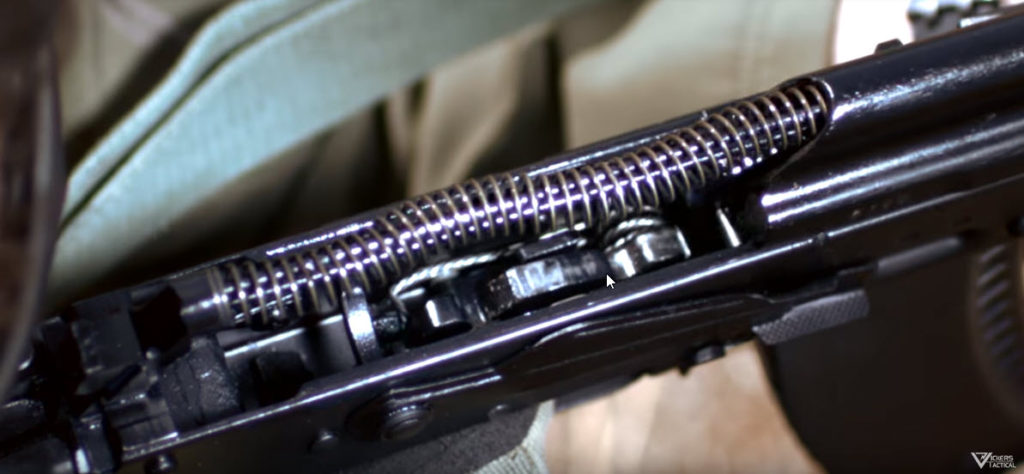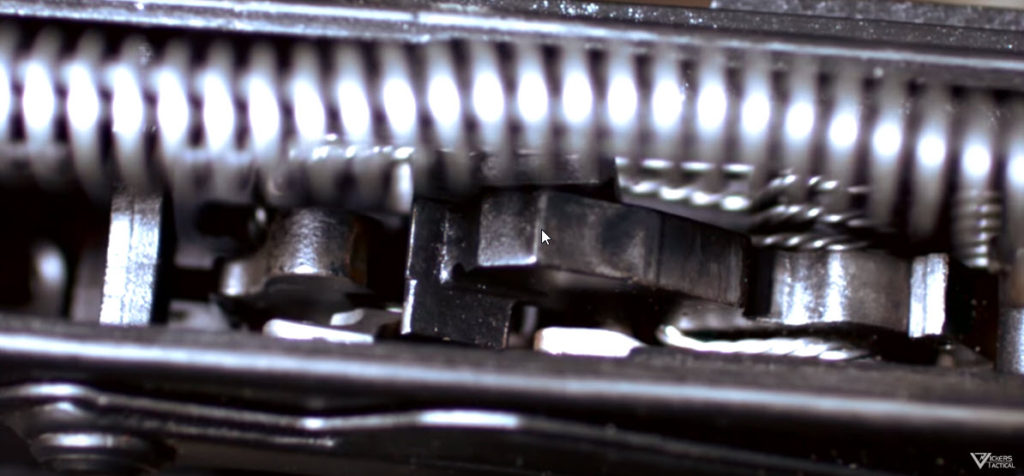The story of Arsenal is a 147-year saga of industrial evolution, mirroring the geopolitical shifts of its native Bulgaria. From its inception as a state-run armory dedicated to national defense to its modern incarnation as a privatized, global defense exporter, each chapter of its history has forged the core competencies that define its market position today.
1.1 The Foundation Era (1878-1948): Forging a Nation’s Sword
The company’s origins are inextricably linked to the birth of modern Bulgaria. Following the nation’s liberation, the “Artillery Arsenal of Rousse” was established by decree in 1878, tasked with the critical mission of equipping the newly formed Bulgarian army.1 This founding narrative—a legacy intertwined with national sovereignty—remains a cornerstone of the company’s identity. Initially managed by Russian officers, the factory came under Bulgarian leadership in 1884.1
Recognizing the strategic vulnerabilities of a border city, the arsenal was relocated to the capital, Sofia, in 1891.1 A more significant move occurred in 1924 when, for strategic considerations, the entire operation was transferred to the centrally located city of Kazanlak in the “Valley of the Roses”.1 Renamed the “State Military Factory,” this Kazanlak facility, which celebrated its centennial in 2024, became the heart of Bulgaria’s defense industry.1 During this period, the factory’s mandate expanded significantly. Beyond producing rifles and ammunition, it developed a broad industrial base by manufacturing complex materiel such as gas masks, various artillery powders, and even its first lathes and milling machines, laying the groundwork for future diversification.1
1.2 The Warsaw Pact Years (1948-1989): Mastering the Kalashnikov
The onset of the Cold War brought the most transformative period in the company’s history. In 1948, the factory was fully nationalized, placed under the Ministry of Industry, and designated with the sterile, numeric title “Factory 10”.1 This marked its formal integration into the vast industrial complex of the Soviet-led Warsaw Pact.
The pivotal moment arrived between 1956 and 1958 when Factory 10 commenced production of the Kalashnikov assault rifle, with the first complete unit manufactured in 1958.1 Initially, these rifles were assembled from parts kits imported from the Soviet Union. However, leveraging its established industrial expertise, the factory quickly mastered the intricate manufacturing processes. By the mid-1960s, Factory 10 was engaged in the full, licensed production of its own Kalashnikovs, including the fixed-stock AKK and the folding-stock AKKS, built to Soviet technical specifications.2
To conceal the scale of its military activities, the enterprise was renamed the “Friedrich Engels Machine Building Plant” in 1964, a deliberately civilian-sounding moniker.1 Under this guise, the facility expanded into a massive conglomerate of seven independent factories. In a remarkable display of its diverse manufacturing capabilities, it even undertook the assembly of “Bulgar Renault-8” automobiles in 1966.1 This era of immense growth saw the production of the one-millionth Kalashnikov in 1982 and the successful transition to manufacturing the next-generation 5.45x39mm AK-74 platform and its associated ammunition.1
1.3 The Post-Soviet Pivot (1990-Present): A Capitalist Arsenal
The collapse of the Soviet Union and the dissolution of the People’s Republic of Bulgaria necessitated a radical reinvention. In 1991, the sprawling state-owned enterprise underwent its most critical business transition, privatizing as a joint-stock company and adopting its modern name: “Arsenal JSCo”.1
With diminished domestic military requirements, the newly independent company aggressively pivoted toward the global export market. Management recognized the immense commercial potential of its products and began a strategic modernization of its portfolio. The military-grade AKs were updated and rebranded as the “AR” series for export, while new semi-automatic lines, designated “SA” and “SLR,” were developed specifically for the lucrative Western civilian markets.2
Demonstrating remarkable strategic agility, Arsenal quickly adapted to new market demands. It began producing firearms in popular NATO calibers, such as 5.56x45mm and 7.62x51mm, and secured crucial NATO AQAP 2110 and ISO 9001 quality certifications.1 This move was essential to position Arsenal not as a mere surplus dealer, but as a reliable, modern supplier to Western nations and consumers. Furthermore, the company leveraged its deep institutional knowledge by establishing an engineering division dedicated to “know-how” transfers, helping other countries establish their own arms manufacturing capabilities.1
The premium market position that Arsenal enjoys today is not a recent marketing invention but the direct commercialization of its historical trajectory. The company’s identity was forged over a century of operating under stringent state and military-alliance standards, where absolute reliability and adherence to technical data packages were paramount, far outweighing concerns of commercial cost-cutting. This history cultivated a deep reservoir of institutional knowledge in metallurgy and the complex, capital-intensive processes of forging and milling steel. When Arsenal privatized, it did not need to create a reputation for quality from scratch; it simply had to leverage its existing, proven military-grade capabilities. The marketing of “hot-die hammer forged” receivers is not just branding jargon; it is the commercial expression of the company’s core historical identity. This allows Arsenal to command a premium price because it is selling a civilian-legal version of a product built to a military standard that most commercial-first competitors cannot easily or economically replicate. This legacy is its single greatest strategic asset.
Section II: Penetrating the American Market: Strategy, Execution, and Branding
Arsenal’s success in the United States is a case study in strategic vertical integration, savvy navigation of complex regulations, and masterful brand positioning. The company built a formidable presence by controlling its supply chain and cultivating a narrative of uncompromising quality that resonates with the most discerning segment of the firearms market.
2.1 The U.S. Bridgehead: The Arsenal, Inc. / K-Var Corporate Symbiosis
The architecture of Arsenal’s U.S. operations is a tightly integrated triumvirate. At the top is Arsenal AD in Kazanlak, Bulgaria, the primary manufacturer of the core components and firearms.3 The critical link is Arsenal, Inc., based in Las Vegas, Nevada, which serves as the exclusive licensed U.S. importer and, crucially, a manufacturer in its own right.7 The third pillar is K-Var Corp., the premier online retailer and distributor for Arsenal products.10
This is not a conventional, arms-length business relationship. Public records indicate that Arsenal, Inc. and K-Var Corp. share a physical address in Las Vegas and key leadership, with Vartan Barsoumian identified as the CEO of both entities.7 This vertically integrated structure provides immense strategic advantages. It ensures absolute control over branding and messaging from the factory floor to the final point of sale. It also allows for the careful management of product flow and pricing, minimizing channel conflict and reinforcing the brand’s premium status. This tight control over the supply chain has led to a market reputation, and some consumer complaints, of creating artificial scarcity to drive demand and prices higher.14
2.2 Navigating the Regulatory Gauntlet: Turning Law into Opportunity
Arsenal’s entry into the U.S. market coincided with a period of intense regulation, namely the 1994 Federal Assault Weapons Ban. The company’s initial imports, such as the SA-93 rifle and the SLR-95, were “sporterized” to comply with the law, featuring thumbhole stocks, no bayonet lugs, and unthreaded barrels.2
The true key to their long-term success, however, was mastering U.S. Code 922(r). This regulation restricts the assembly of a semi-automatic rifle from more than 10 specified imported parts. Here, Arsenal, Inc.’s legal status as a U.S. manufacturer became its most powerful tool.8 The business model involves importing rifles from Bulgaria in a compliant, “sporter” configuration. Then, at the Las Vegas facility, these rifles are remanufactured using high-quality, U.S.-made components—such as trigger groups, pistol grips, and buttstocks—to legally reconfigure them into the military-style firearms that American consumers demand.9 This process transformed a regulatory burden into a core part of their value proposition. They are not merely importing a finished good; they are performing the final, critical manufacturing and quality control steps on U.S. soil, a fact they leverage to assure customers of both compliance and quality.9
2.3 Forging a Premium Brand: The “Gold Standard” Narrative
Arsenal’s marketing strategy deliberately focuses on its superior and historically proven manufacturing processes. The brand’s messaging heavily emphasizes the hot-die hammer forging and subsequent multi-hour milling of its SAM series receivers from solid steel billets.9 This is relentlessly positioned as a significant upgrade over the more common, faster, and less expensive method of using stamped sheet steel receivers. This narrative directly connects Arsenal’s products to the legendary durability of early milled Soviet AK-47s, reinforcing claims of “unequalled strength, precision and durability”.17
The brand consistently and effectively links its civilian products to their authentic Bulgarian military counterparts, such as noting that the civilian SAM5 is based on the military’s AR-M1 rifle.19 This narrative of possessing an “authentic battle rifle” built to last for generations justifies the high price point and strongly appeals to serious enthusiasts and collectors.9 By consciously targeting the high end of the market—the “die-hard enthusiasts and collectors” who want “the absolute best” 20—Arsenal has largely ceded the budget segment to competitors. This focused strategy has been instrumental in cementing its widespread reputation as the “gold standard” for production AK-style rifles in the U.S..21
2.4 The “Circle 10” Ecosystem: A Case Study in Component Branding
A prime example of Arsenal’s marketing acumen is the branding of its “Circle 10” magazines. The “Circle 10” stamp is the factory marking of Arsenal AD in Bulgaria, and it adorns their iconic polymer “waffle” pattern magazines.23 These magazines are marketed unequivocally as “inarguably the finest AK magazines in the world”.23 This claim is substantiated with references to their military-grade bona fides, such as passing 100% of military drop tests and featuring steel reinforcements in the feed lips, locking lugs, and front and back straps of the magazine body.23
By successfully branding a single, critical component as the undisputed best-in-class, Arsenal creates a powerful “halo effect” for its entire product line. A consumer who is convinced that the Circle 10 is the most reliable magazine available is logically predisposed to trust the quality and reliability of the rifle it is designed for. The magazine becomes a tangible, affordable symbol of the entire brand’s commitment to military-grade durability, reinforcing the premium narrative and justifying the higher cost of the complete firearm system.
Section III: U.S. Civilian Product Portfolio Analysis
Arsenal’s product portfolio in the United States is a masterclass in strategic market segmentation. The offerings are clearly delineated to capture distinct consumer profiles within the premium segment of the AK market. The company effectively uses its milled receiver (SAM series) and stamped receiver (SLR series) lines to bracket the high-end, forcing competitors to either compete on price at the low end or attempt to match Arsenal’s unique heritage and manufacturing claims.
A note for media professionals: Arsenal, Inc. maintains a media kit available via a Dropbox link on its official website.25 This resource contains high-resolution product images, detailed specification sheets, and corporate logos. This entity should not be confused with “Frankford Arsenal,” an unrelated American company that specializes in ammunition reloading equipment and accessories.26
3.1 The Milled Receiver Line (SAM Series): The Bedrock of Quality
The SAM (Semi-Automatic Milled) series represents Arsenal’s flagship offering, built around the heavily marketed hot-die hammer-forged and milled receivers. These firearms are the embodiment of the brand’s “built-to-last” philosophy and target the most discerning buyers.
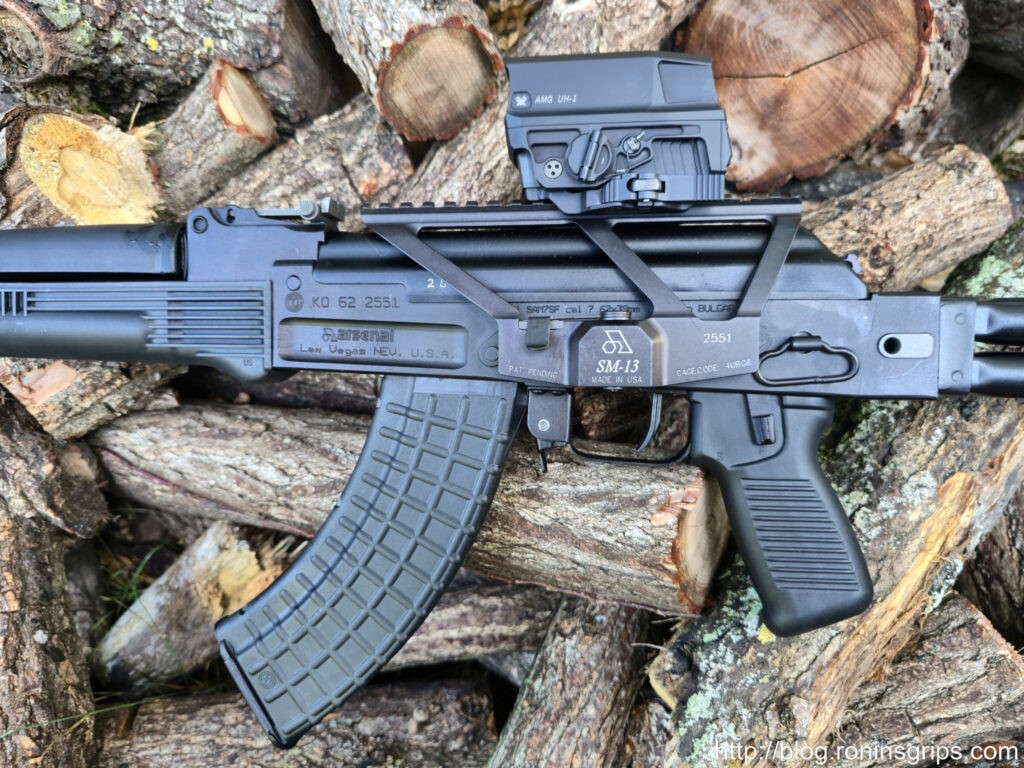
3.1.1 Arsenal SAM7R (7.62x39mm Rifle)
The SAM7R is the quintessential Arsenal rifle and the bedrock of its reputation in the U.S. It features a 16.3-inch cold hammer-forged, chrome-lined barrel and the signature milled receiver, both produced in Bulgaria. Imported by Arsenal, Inc. in Las Vegas, it is configured for 922(r) compliance with high-quality U.S. parts. It is often equipped with the FIME Group Enhanced Fire Control Group, which provides a smoother, lighter trigger pull than standard AK triggers.9 The platform is available in numerous configurations, including the classic fixed stock (SAM7R) and a robust side-folding stock variant (SAM7SF).17
Table 1: Arsenal SAM7R At-a-Glance
| Feature | Specification | |
| Caliber | 7.62x39mm | |
| Receiver | Hot-Die Hammer-Forged Milled | |
| Barrel | 16.3″ Cold Hammer-Forged, Chrome-Lined | |
| Weight | Approx. 8.0 lbs | |
| Price Range (USD) | $1,600 – $2,400 (Varies by configuration and market conditions) 17 | |
| Customer Sentiment | Pros: Widely praised for phenomenal durability, with users describing it as “indestructible” and able to “last two lifetimes.” The action is exceptionally smooth, and the rifle is noted for being soft-shooting for its caliber. Reliability is a key selling point, with reports of thousands of rounds fired with zero failures. It is frequently cited by reviewers and owners as the “best AK ever built” or the “gold standard”.9 | Cons: The most common complaints are its very high price point and significant weight compared to stamped-receiver AKs. The factory paint finish is a frequent point of criticism, often described as “Weber grill paint” that is prone to flaking and not up to the standard of a rifle in its price class. The milled receiver design also limits compatibility with the vast aftermarket of stocks and handguards designed for stamped AKMs.21 |
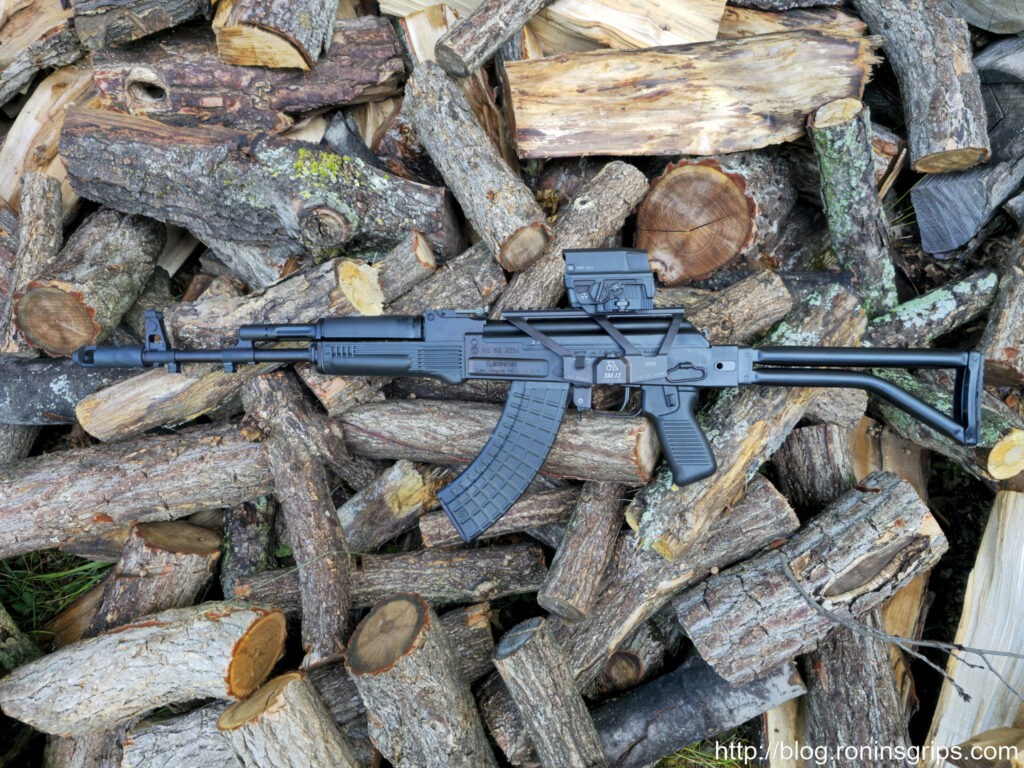
3.1.2 Arsenal SAM5 (5.56x45mm Rifle)
The SAM5 is Arsenal’s answer for the U.S. consumer who desires the premium milled receiver construction but prefers the ballistics, lower recoil, and widespread availability of the 5.56x45mm NATO cartridge. It shares the same robust forged and milled build quality as the SAM7R but is specifically engineered for the 5.56mm round, featuring a 1:7″ barrel twist rate ideal for stabilizing a wide range of modern.223 and 5.56mm projectiles.33
Table 2: Arsenal SAM5 At-a-Glance
| Feature | Specification | |
| Caliber | 5.56x45mm NATO (.223 Rem) | |
| Receiver | Hot-Die Hammer-Forged Milled | |
| Barrel | 16.3″ Cold Hammer-Forged, Chrome-Lined (1:7″ Twist) | |
| Weight | Approx. 8.0 lbs | |
| Price Range (USD) | $1,850 – $2,100+ 33 | |
| Customer Sentiment | Pros: Successfully combines the revered SAM7 build quality with a caliber that is immensely popular in the U.S. market. It is often described as a “go-to rifle” and is highly collectible. Owners praise its simple, streamlined design and high reliability.19 | Cons: It shares the same primary drawbacks as the SAM7R: a high price tag, heavy weight, and the potential for finish complaints. As with many 5.56mm AK variants, magazine compatibility and availability can be more of a concern compared to the ubiquitous AR-15 platform. |
3.1.3 Arsenal SAM7K (7.62x39mm Pistol)
The SAM7K is a compact pistol variant built on the same formidable milled receiver as the SAM7 rifle, but with a much shorter barrel, typically 8.5 inches. It is marketed as a premium, high-end personal defense weapon.38 A critical point of differentiation for consumers is the configuration of the rear trunnion, which dictates how a pistol brace or, if registered as a Short-Barreled Rifle (SBR), a stock can be attached. For example, the SAM7K-44 model features a rear Picatinny rail for easy mounting, while the SAM7K-34 model has a quick-detach sling port, which presents more of a challenge for accessory attachment.14
Table 3: Arsenal SAM7K At-a-Glance
| Feature | Specification | |
| Caliber | 7.62x39mm | |
| Receiver | Hot-Die Hammer-Forged Milled | |
| Barrel | 8.5″ Cold Hammer-Forged, Chrome-Lined | |
| Weight | Approx. 5.9 lbs | |
| Price Range (USD) | $1,700 – $2,100+ 14 | |
| Customer Sentiment | Pros: Heralded for its extreme durability, with some users claiming it is the “most durable AK made.” It is considered a top-tier AK pistol with a very smooth action.14 | Cons: The price is considered exceptionally high, even for a premium AK pistol. It is very heavy and noticeably front-heavy, making it unwieldy to shoot without a stabilizing brace or stock. The variation in rear trunnion designs between models has been a source of frustration for consumers seeking to customize their firearm.14 |
3.2 The Stamped Receiver Line (SLR Series): The Accessible Workhorse
The SLR (Self-Loading Rifle) series utilizes a more conventional, high-quality stamped steel receiver. This construction method is less expensive and results in a lighter firearm, offering a more accessible entry point into the Arsenal ecosystem without sacrificing core quality features like the hammer-forged, chrome-lined barrel.
3.2.1 Arsenal SLR-107R (7.62x39mm Rifle)
The SLR-107R is Arsenal’s most prominent stamped receiver offering. It is built around a 1mm stamped Bulgarian receiver and features the same 16.25-inch cold hammer-forged, chrome-lined barrel found in its premium cousins.16 In the U.S. market, it is positioned as a significant quality upgrade from entry-level imported AKs (like the Romanian WASR-10) and represents a top-tier “workhorse” option for serious shooters.42
Table 4: Arsenal SLR-107R At-a-Glance
| Feature | Specification | |
| Caliber | 7.62x39mm | |
| Receiver | 1mm Stamped Steel | |
| Barrel | 16.25″ Cold Hammer-Forged, Chrome-Lined | |
| Weight | Approx. 7.3 lbs | |
| Price Range (USD) | $1,500 – $2,000 (Historically available for less, but market prices have risen) 42 | |
| Customer Sentiment | Pros: Praised for its excellent quality for a stamped rifle, offering a lighter and more affordable alternative to the SAM7R. Fit and finish are generally very good, with straight sights being a common positive note compared to lower-tier imports. Owners often feel it is “worth the extra money” over cheaper options due to its smooth shooting characteristics and overall reliability.16 | Cons: It still carries a premium price for a stamped AK. The paint finish can suffer from cosmetic scratches and imperfections out of the box. Some users have reported that the magazine wells can be excessively tight, requiring minor fitting to accept certain types of surplus or polymer magazines.16 |
Historically, Arsenal has also imported other highly regarded SLR models, such as the SLR-104 in 5.45x39mm (an AK-74 pattern rifle) and the SLR-106 in 5.56x45mm. Though often discontinued or released in limited batches, these rifles are highly sought after on the secondary market and have significantly contributed to the brand’s reputation for quality across multiple calibers.7
Conclusion
The transformation of Arsenal from a Bulgarian state armory into a dominant force in the premium segment of the U.S. civilian firearms market is a testament to a multifaceted and expertly executed long-term strategy. The analysis reveals that the company’s success is not attributable to a single factor but to the synergistic interplay of historical legacy, vertical business integration, astute regulatory navigation, and disciplined brand management.
Key Findings Synthesized:
- Legacy as a Strategic Asset: Arsenal’s century-plus history as a military manufacturer under strict state and Warsaw Pact standards endowed it with an institutional mastery of robust, high-cost manufacturing processes like hammer-forging and milling. This history is not merely a talking point; it is the fundamental basis of its value proposition, allowing the company to market a level of authenticity and durability that is difficult and costly for commercially-focused competitors to replicate.
- Vertically Integrated Market Control: The symbiotic relationship between Arsenal AD in Bulgaria, the importer/manufacturer Arsenal, Inc. in Las Vegas, and the primary retailer K-Var Corp. creates a tightly controlled channel from factory to consumer. This structure enables precise control over branding, pricing, and supply, which has been instrumental in establishing and maintaining the brand’s premium status.
- Branding Discipline and Market Segmentation: Arsenal has successfully cultivated a “gold standard” reputation by relentlessly focusing its marketing on its superior manufacturing methods and military heritage. It has deliberately avoided the high-volume, low-margin budget market, instead segmenting the premium niche with its “super-premium” milled SAM series for collectors and its “premium workhorse” stamped SLR series for serious enthusiasts. This strategy maximizes its addressable market within its chosen high-margin space.
- Turning Regulation into Opportunity: The company demonstrated exceptional business acumen by turning the complex requirements of U.S. firearms law, particularly 922(r), into a core part of its business model. By performing final manufacturing and quality control in the U.S., Arsenal, Inc. not only ensures compliance but also adds tangible value and reinforces its commitment to the American market.
In conclusion, Arsenal’s formula for success is clear: it sells a product whose quality is rooted in a genuine military-industrial past, controls the narrative and supply through a vertically integrated U.S. operation, and targets a specific, high-value consumer willing to pay a premium for perceived authenticity and durability. This disciplined approach has allowed the Kazanlak colossus to not only survive the fall of the Iron Curtain but to thrive, establishing itself as a benchmark for quality in the world’s most competitive civilian firearms market.
If you find this post useful, please share the link on Facebook, with your friends, etc. Your support is much appreciated and if you have any feedback, please email me at in**@*********ps.com. Please note that for links to other websites, we are only paid if there is an affiliate program such as Avantlink, Impact, Amazon and eBay and only if you purchase something. If you’d like to directly contribute towards our continued reporting, please visit our funding page.
Works cited
- Our history – Arsenal JSCo. – Bulgarian manufacturer of weapons …, accessed July 23, 2025, https://www.arsenal-bg.com/about/history
- Bulgarian AK History, Arsenal Factory 10 – Faktory 47, accessed July 23, 2025, https://www.faktory47.com/blogs/kalashnikov/bulgarian-ak-history
- Company Profile – Arsenal JSCo. – Bulgarian manufacturer of weapons and ammunition since 1878, accessed July 23, 2025, https://www.arsenal-bg.com/company-profile-12
- Arsenal JSCo. – Bulgarian manufacturer of weapons and ammunition since 1878, accessed July 23, 2025, https://www.arsenal-bg.com/
- Arsenal AD – Wikipedia, accessed July 23, 2025, https://en.wikipedia.org/wiki/Arsenal_AD
- AR-M1 – Wikipedia, accessed July 23, 2025, https://en.wikipedia.org/wiki/AR-M1
- Arsenal, Inc. > Arsenal, US manufacturer and importer of SAM7, SLR Series, Circle 10 magazines, parts, and accessories for AK-47/74 type Rifles., accessed July 23, 2025, https://www.arsenalinc.com/
- Arsenal, Inc. > Firearms > AK Rifles, accessed July 23, 2025, https://www.arsenalinc.com/usa/firearms/rifles/
- Review: Arsenal Inc. SAM7R-67T | An Official Journal Of The NRA, accessed July 23, 2025, https://www.americanrifleman.org/content/review-arsenal-inc-sam7r-67t/
- One of the largest suppliers of Brand new Quality AK-47 and AK-74 …, accessed July 23, 2025, https://www.k-var.com/about-us
- Firearms | Browse an Expansive Collection of K-VAR Firearms & Weapons at K-Var, accessed July 23, 2025, https://www.k-var.com/firearms
- The K-Var Podcast With 221B Tactical That Shook the Law Enforcement and Firearms Community, accessed July 23, 2025, https://blog.k-var.com/op-ed/221b-tactical-podcast-law-enforcement-kvar/
- Contact Us at K-Var, accessed July 23, 2025, https://www.k-var.com/contactus
- [Handgun] ARSENAL SAM7K MILLED AK47 PISTOL- SAM7K-34 PRICE – Reddit, accessed July 23, 2025, https://www.reddit.com/r/gundeals/comments/lqzqvy/handgun_arsenal_sam7k_milled_ak47_pistol_sam7k34/
- K-Var & Arsenal’s Dishonest Business Practices, What’s Really Going On? – YouTube, accessed July 23, 2025, https://www.youtube.com/watch?v=nOVdS-Jm1Uk
- Arsenal SLR107R-11 7.62x39mm Black Semi-Automatic Rifle – K-Var, accessed July 23, 2025, https://www.k-var.com/arsenal-slr-107r-762×39-semi-auto-rifle-with-1625-inch-threaded-barrel-stamped-receiver
- SAM7R 7.62x39mm Semi-Auto Rifle Muzzle Brake … – Arsenal, Inc., accessed July 23, 2025, https://www.arsenalinc.com/usa/sam7r-7-62x39mm-semi-auto-rifle-muzzle-brake-and-enhanced-fcg
- AK-47 – Wikipedia, accessed July 23, 2025, https://en.wikipedia.org/wiki/AK-47
- Arsenal SAM5 Rifle: My 6 Reasons For Buying This 5.56 Milled AK Import – YouTube, accessed July 23, 2025, https://www.youtube.com/watch?v=PT3I3mFsJtE
- Gun Review: The Bulgarian-Made Arsenal SAM7R 7.62x39mm AK – Athlon Outdoors, accessed July 23, 2025, https://athlonoutdoors.com/article/arsenal-sam7r-ak-rifle/
- Best AK-47 Buyer’s Guide [Field Tested] – Gun Digest, accessed July 23, 2025, https://gundigest.com/rifles/the-best-ak-47-rifles-you-can-find-in-the-u-s
- Which brands of AK type rifles should be pursued and which to be avoided? | Primary & Secondary Forum, accessed July 23, 2025, https://primaryandsecondary.com/forum/index.php?threads/which-brands-of-ak-type-rifles-should-be-pursued-and-which-to-be-avoided.445/
- Circle 10 Magazines – K-Var, accessed July 23, 2025, https://www.k-var.com/circle-10-mags
- Arsenal Circle 10 AK Mag — Quality You Can Trust – GunMag Warehouse, accessed July 23, 2025, https://gunmagwarehouse.com/blog/arsenal-circle-10-ak-mag-quality-you-can-trust/
- Arsenal, Inc. > Media Kit, accessed July 23, 2025, https://www.arsenalinc.com/usa/media-kit
- ESSENTIALS RELOADING KIT – Frankford Arsenal, accessed July 23, 2025, https://www.frankfordarsenal.com/new/essentials-reloading-kit/1198151.html
- Frankford Arsenal Essentials Reloading Kit with F-1 Single Stage Reloading Press – Scheels, accessed July 23, 2025, https://www.scheels.com/p/frankford-arsenal-essentials-reloading-kit-with-f-1-single-stage-reloading-press/4196-1198151/
- Frankford Arsenal® Essentials Reloading Kit with F-1 Single Stage Reloading Press, accessed July 23, 2025, https://www.cabelas.ca/product/170637/frankford-arsenal-essentials-reloading-kit-with-f-1-single-stage-reloading-press
- Buy arsenal firearms sam7r Online at GunBroker.com, accessed July 23, 2025, https://www.gunbroker.com/semi%20auto%20rifles/search?keywords=arsenal+firearms+sam7r
- Arsenal SAM7 3000 Round Review : r/guns – Reddit, accessed July 23, 2025, https://www.reddit.com/r/guns/comments/saoifk/arsenal_sam7_3000_round_review/
- THE BEST AK 47 ARSENAL SAM7SF REVIEW – YouTube, accessed July 23, 2025, https://www.youtube.com/watch?v=6Wjuc4pO1y0
- Range Report: Arsenal SAM7SF AK-47 (7.62x39mm) – YouTube, accessed July 23, 2025, https://www.youtube.com/watch?v=H8-a958X1tI
- Arsenal SAM5 5.56X45MM NATO Semi-Auto 16.3″ 30+1 RD SAM567 – RK Guns, accessed July 23, 2025, https://www.rkguns.com/arsenal-sam5-556x45mm-nato-semi-auto-163-30-1-rd-sam567.html
- Arsenal SAM5-62 5.56X45 16.3 Milled Receiver AK47 Rifle 20rd – Prepper Gun Shop, accessed July 23, 2025, https://www.preppergunshop.com/arsenal-sam5-62-5-56×45-16-3-milled-receiver-ak47-rifle-20rd
- Arsenal SAM5 5.56x45mm Semi-Auto Milled Receiver AK47 Rifle Black 30rd – K-Var, accessed July 23, 2025, https://www.k-var.com/arsenal-sam5-556x45mm-semi-auto-milled-receiver-ak47-rifle-black-30rd
- Arsenal, Inc. > Rifles > SAM5 SERIES, accessed July 23, 2025, https://www.arsenalinc.com/usa/firearms/rifles/sam5-series/
- SAM5-83 Limited Edition. A SIDE-FOLDING SAM5?! YES PLEASE! – YouTube, accessed July 23, 2025, https://www.youtube.com/watch?v=apRGSsE21Is
- sam7k series – Pistols – Arsenal, Inc., accessed July 23, 2025, https://www.arsenalinc.com/usa/firearms/pistols/sam7k-series/
- Arsenal SAM7K-44: The Ultimate Defensive Pistol – K-Var, accessed July 23, 2025, https://www.k-var.com/arsenal-sam7k-44-the-ultimate-defensive-pistol
- Arsenal Firearms SAM7K for Sale | Buy Online at GunBroker, accessed July 23, 2025, https://www.gunbroker.com/arsenal-firearms-sam7k/search?keywords=arsenal%20firearms%20sam7k&s=f
- SAM7K-44 SBR : r/NFA – Reddit, accessed July 23, 2025, https://www.reddit.com/r/NFA/comments/13ifftp/sam7k44_sbr/
- How Much is an SLR-107 Worth? Sell Your Arsenal Firearm Now! – Cash for Arms, accessed July 23, 2025, https://www.cashforarms.com/blogs/how-much-is-an-arsenal-slr-107-currently-worth
- Product reviews for Arsenal SLR107R-11 7.62x39mm Black Semi-Automatic Rifle – K-Var, accessed July 23, 2025, https://www.k-var.com/productreviews/26913
- $1300 Arsenal SLR107r basic model or $800-$1000 AR 15? : r …, accessed July 23, 2025, https://www.reddit.com/r/liberalgunowners/comments/iy2htk/1300_arsenal_slr107r_basic_model_or_8001000_ar_15/
- The Definitive History of The Arsenal Bulgaria AK47 (Episode I: 1993-2006) – YouTube, accessed July 23, 2025, https://www.youtube.com/watch?v=7QxCWWnJ6Ec
